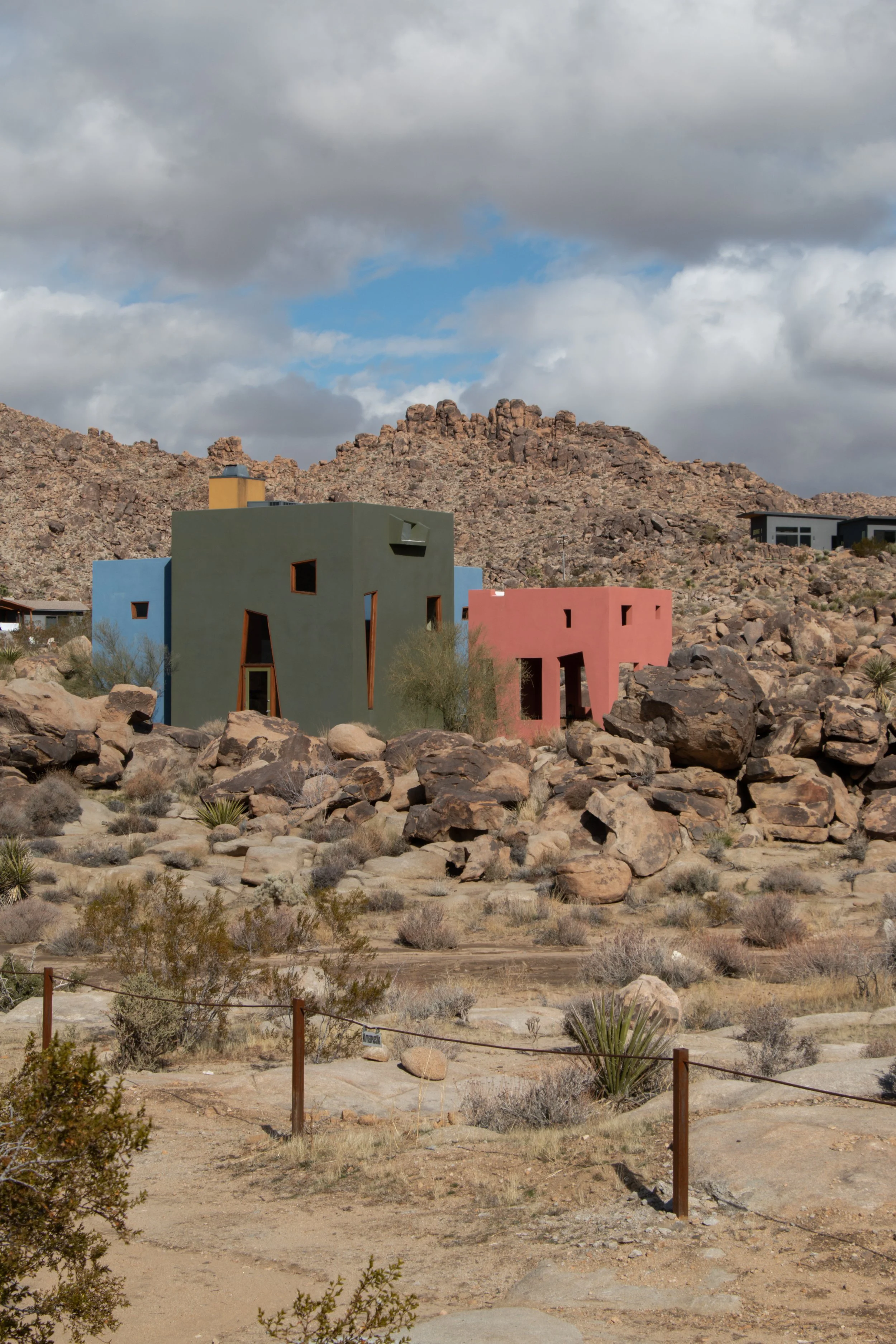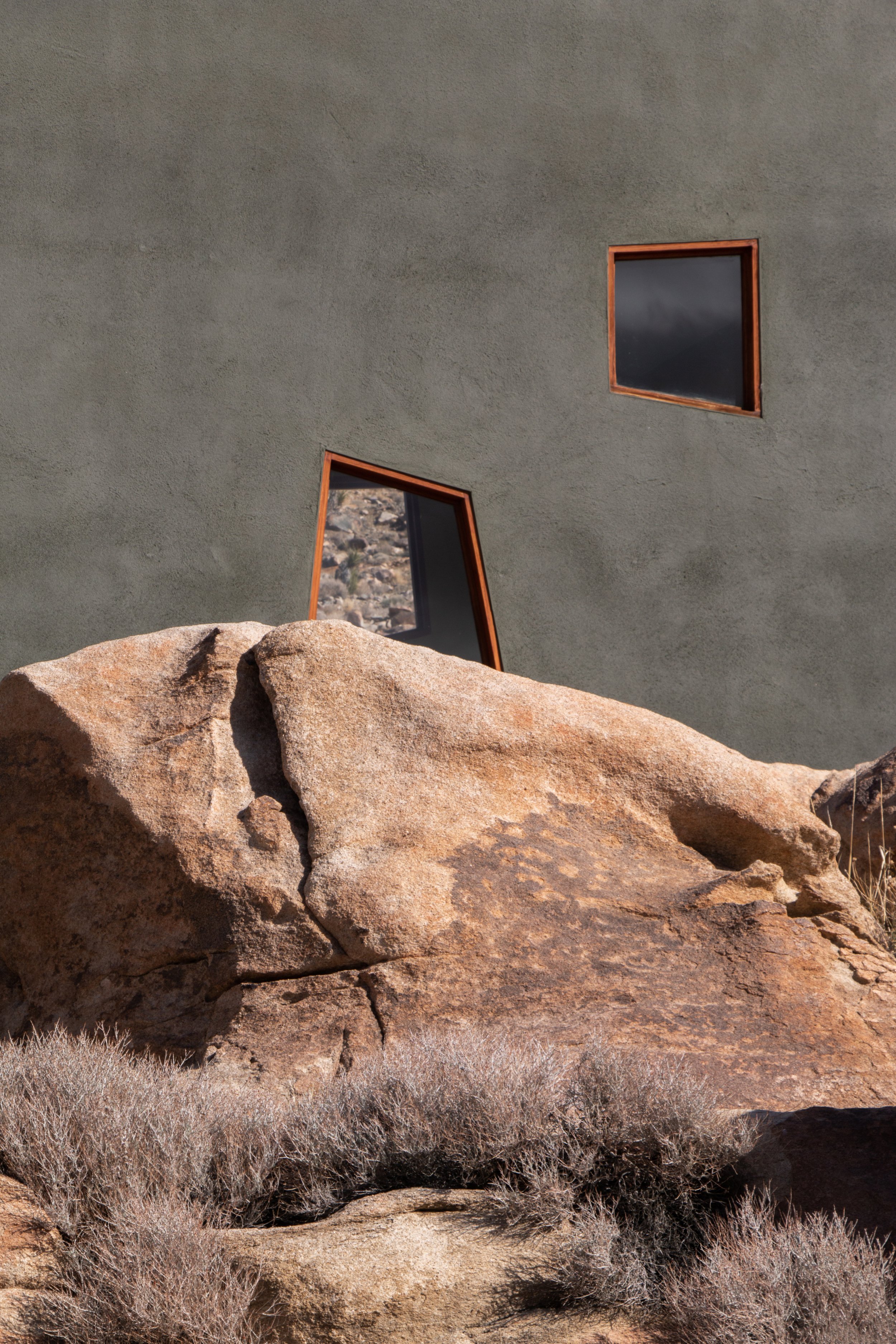The House That Landed
By Paul Martinez
Photography © Paul Martinez
There are certain places you pass so often that they become landmarks in your mind, even if their purpose remains a mystery. For years, the Monument House was just that—a flicker of bold color on the periphery of my drives into Joshua Tree National Park, a geometric anomaly against the soft earth tones of the Mojave. At first, it felt like a sharp contrast, an artificial presence in a landscape known for its raw, untouched beauty. But as time went by, my curiosity deepened. Each time I passed, I found myself looking for it, searching for that familiar burst of colors tucked within the boulders. Eventually, I had to see it up close.
Up close, it became even more of a contradiction. The Monument House doesn’t try to disappear into the land, the way so many desert homes do. It doesn’t blend into the sand with adobe curves or echo the Joshua trees with natural wood and glass. Instead, it asserts itself with unapologetic color and form—three distinct pavilions stacked against the landscape like an avant-garde installation. And yet, despite this defiance, it does not feel out of place. It belongs precisely because it doesn’t try to.
The desert has always been a home for the unusual, a landscape that embraces both ancient pasts and imagined futures. Designed in 1990 by Josh Schweitzer, the Monument House feels like a relic of an era that looked at the future with color and confidence rather than sleek minimalism. Today’s modern homes often strive for invisibility, erasing the line between architecture and nature. But the Monument House does the opposite—it celebrates contrast, standing firm in its identity rather than apologizing for its presence. It looks like something that landed here rather than something that was built, and perhaps that is what makes it so compelling.
Joshua Tree is a place defined by organic chaos—giant rock formations, gnarled yuccas, shifting sands. The Monument House, by contrast, is all precision: angular planes, trapezoidal openings, a deliberate, geometric order imposed on the landscape. It should feel unnatural, yet it doesn’t. Its cutouts frame the desert sky like paintings, its bold hues somehow reflecting the world around them. There’s a strange harmony in its presence, a reminder that architecture doesn’t always have to bow to nature to belong within it.
In a way, it represents a vision of the future that never quite arrived. The early 1990s imagined a world of playful, radical forms—an optimism reflected in the postmodern movement, where architects like Schweitzer and his contemporaries embraced the unexpected. But as time moved forward, architectural futurism shifted toward something quieter, more restrained. The Monument House remains a time capsule of an alternate timeline, where modernism stayed bold and joyful instead of fading into beige minimalism.
Its purpose, too, is ambiguous. Originally built as a private retreat, it does not conform to the expectations of a traditional home. There is something sculptural about it, something that feels more like an art object than a dwelling. This raises a question that lingers long after seeing it: Is this a home, or is it a monument?
Perhaps that question is part of what makes it so magnetic. The Monument House refuses easy classification. It exists somewhere between past and future, between home and sculpture, between something human-made and something that feels—oddly, impossibly—natural.
There is a kind of poetry in a house that looks like it fell from the sky, because in many ways, the Mojave itself feels like another world. This is a landscape that makes space for the strange, where the familiar rules of time and place bend in the presence of vast silence and open sky. The best architecture doesn’t just predict the future; it creates a version of the future that we want to remember.
I still pass the Monument House often. Each time, it feels different. The way the desert light catches its edges, the way the colors shift slightly with the season, the way it seems to flicker between worlds. It is a reminder that sometimes, the things that stand out the most belong the most.





